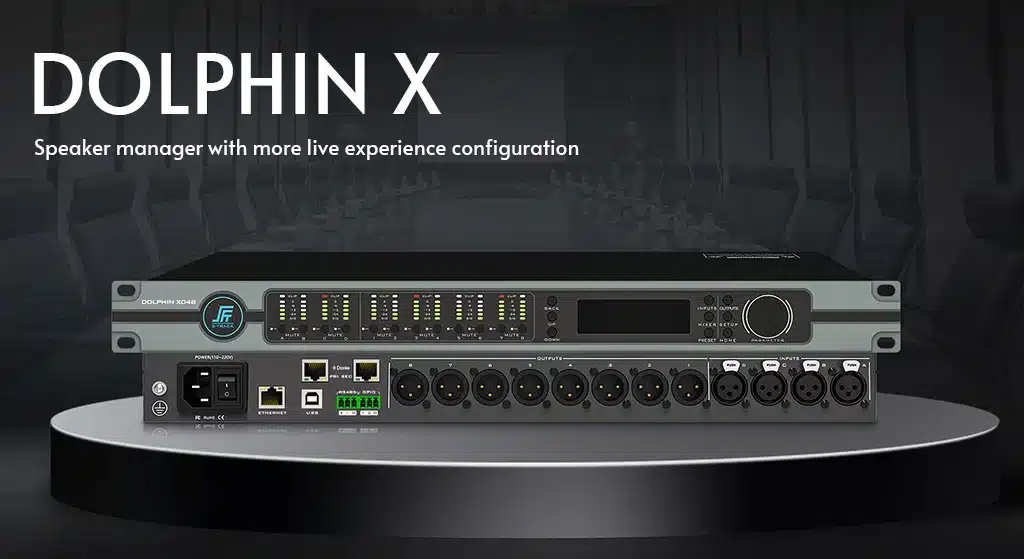Many professionals encounter confusion when selecting between a “speaker manager” and an audio processor.” While both involve signal processing, they serve fundamentally different roles: one is dedicated to speaker performance and protection, while the other manages and optimizes the entire audio signal chain.
Let’s clarify what each one does and how they differ.
Speaker Manager: The “Dedicated Tuner” for Your Speakers
Have you ever experienced muffled bass, harsh highs, or concerns about driver damage when pushing volume levels? A speaker manager addresses these exact issues—it acts as a dedicated optimizer specifically for your speakers. Consider these typical use cases:
In a 5.1 home theater system, it ensures precise bass management: directing low frequencies to the subwoofer and highs to satellite speakers, preventing muddiness and distortion.
For live sound applications, it provides thermal and dynamic protection—automatically limiting output during high-energy peaks like drum hits or vocal bursts to prevent speaker damage.
In commercial installations (e.g., cafes or retail spaces), it corrects frequency response anomalies caused by placement or room acoustics, ensuring consistent sound throughout the space.
In short, a speaker manager doesn’t handle sources or microphones—it focuses exclusively on making your speakers sound better and last longer.

Audio Processor: The “Central Hub” of Your Audio System
When multiple audio sources—such as microphones, media players, or conference systems—are involved, an audio processor acts as the central command unit. It integrates, cleans, and routes all signals for seamless operation. Examples include:
In a conference room: reducing HVAC noise, suppressing echoes in video calls, and intelligently switching between microphone priority (during speech) and media priority (during playback).
In public address systems: managing background music, paging, and emergency alerts to avoid signal conflict, and muting music automatically during announcements.
In multi-functional venues: supporting seamless mode switching (e.g., “presentation” vs. “movie” mode) while providing feedback suppression and source prioritization.
An audio processor, therefore, oversees the entire signal path—from input to output—ensuring clarity, coherence, and reliability across the system.

Key Differences: A Four-Dimension Comparison
Although both devices process audio, their purposes, scope, and functions differ significantly:

Functional Overlap vs. Divergence
Some processing types—such as EQ or limiting—may appear in both, but their implementation and purpose differ:
A speaker manager applies limiting specifically to protect speakers.
An audio processor may use limiting for system-wide dynamic range control.
Similarly, while both may perform EQ, a speaker manager uses it to correct speaker response, while an audio processor may apply EQ for room adaptation or tonal balancing across sources.
Now that you understand the fundamental distinctions between these two types of processors, you can make more informed decisions based on your system’s requirements.
In our next issue, we’ll dive into real-world application examples—like café background music systems and remote conference setups—and offer a practical three-step guide on how to choose the right solution for your needs.
Stay tuned!
400-900-2726
Piso 9, 1B, Parque tecnológico Shangzhi, distrito de Guangming, ciudad de Shenzhen, provincia de Guangdong, China
Derechos de autor © SHENZHEN S TRACK SCIENCE TECHNOLOGY CO., LTD.